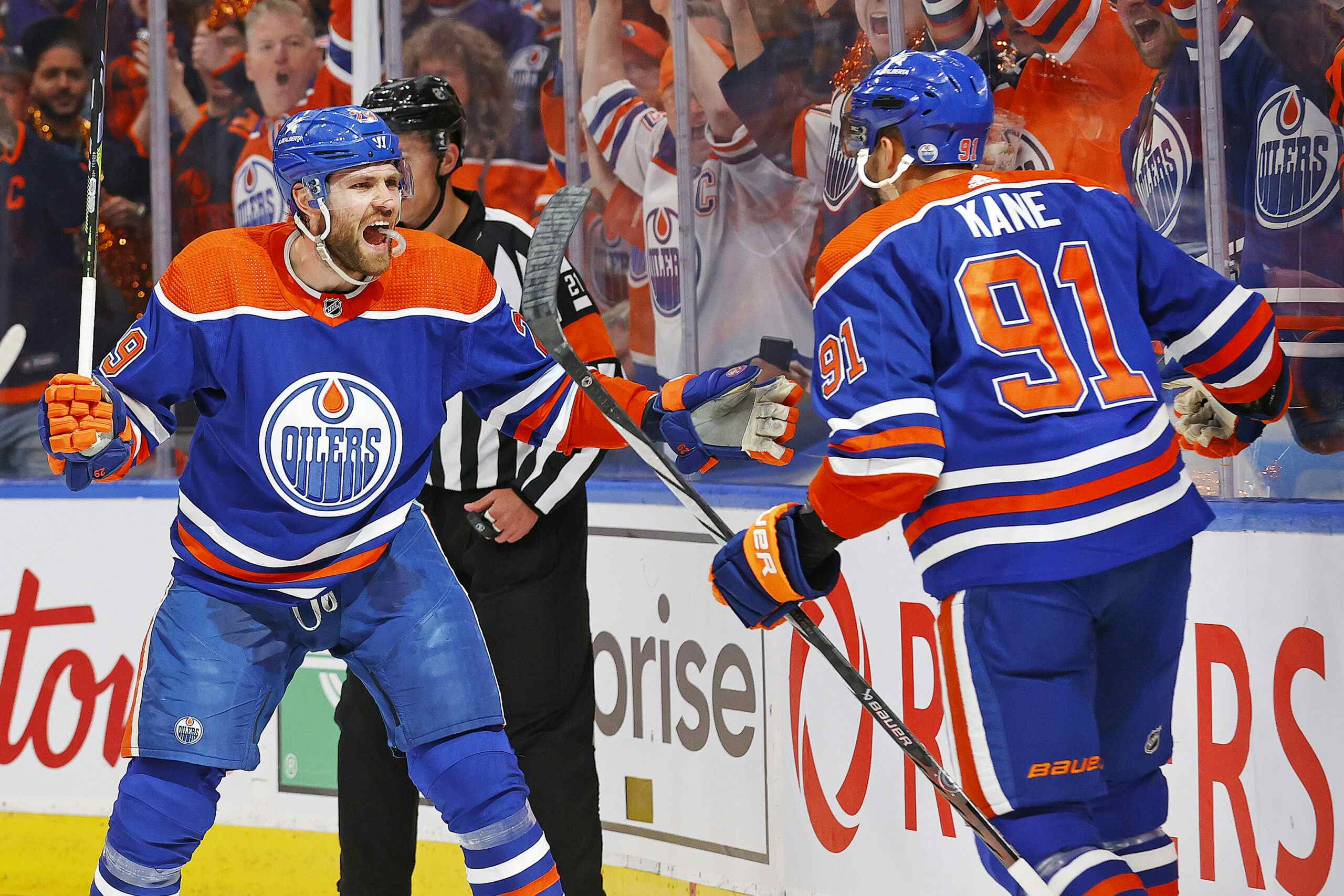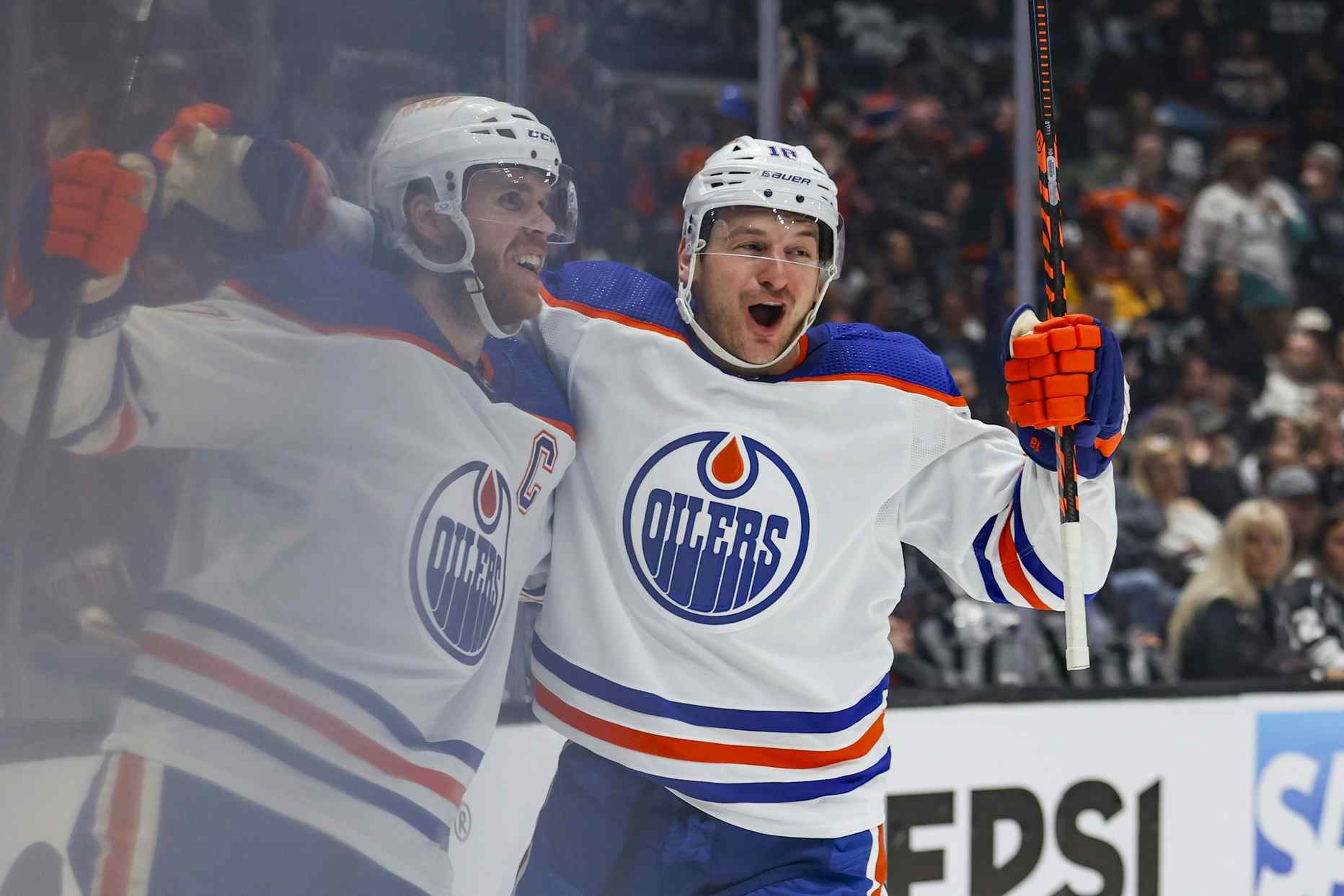The importance of draft picks – right now

‘Building through the draft’ has been the Oilers’ mantra for several seasons now, and they’ve accumulated some top-end talent in the number one spot. With Taylor Hall, Ryan Nugent-Hopkins, Nail Yakupov and a host of other young talents on the team, has the importance of draft picks to the organization diminished?
Probably not, and if it has, it should not have.
There’s Something About Draft Picks

The thing about draft picks is this: their salary is rigidly controlled, initially through an entry-level contract, later by virtue of them being restricted free agents. That’s one of the things that makes them valuable: in most cases they are underpaid relative to unrestricted free agents. There are some exceptions – the difference between running an entry-level guy on the fourth line and a fourth-liner on the fourth line doesn’t typically add up to much dollars-wise unless the general manager has splurged on his role players – but for the most part it’s cheaper to run a young player whenever that player has shown ability to handle the role.
The other thing about draft picks is the timeline. When making selections, especially outside the first round, one is typically projecting five years into the future. This season represents Teemu Hartikainen’s fifth post-draft season; next year will be the fifth post-draft year for Magnus Paajarvi and Anton Lander – and while both of the latter players were rushed into NHL employment, they’re really only coming into their own now. Teams can say, ‘what do we need right now?’ and try and draft it, but since they’re looking five years into the future such an approach is fraught with difficulty.
That combination of artificially capped salary and delayed timeline makes the 2010-2013 drafts pivotal ones for the Oilers.
The Oilers’ Salary Structure

To date, the salary cap hasn’t been a real problem for the Oilers; all of their top talent has been playing on entry-level deals. That stops next season, when Jordan Eberle and Taylor Hall graduate to being $6 million/year players. Sam Gagner’s contract also ends in the summer, leaving the Oilers in an interesting situation with him – do they pay the player or ship him out?
And the money only gets worse moving forward. The entry-level contracts of Ryan Nugent-Hopkins and Justin Schultz expire in the summer of 2014; Jeff Petry’s extremely friendly two-year bridge deal ends at the same time, and Devan Dubnyk will be an unrestricted free agent. Nail Yakupov’s deal ends the year after. If all goes as planned, the team will have some playoff success by then; it seems likely they’ll be augmenting their young core with, say, a veteran left-side defenceman somewhere along the way.
The point is this: come 2014-15, the Oilers could really use some affordable help. Assuming management has put together a winning team, they’re going to need affordable help from that point on.
Constant Pressure

The Oilers need to be able to produce a good, cheap, player or two out of every draft to help alleviate salary cap pressures elsewhere (to say nothing of the fact that, like many contending teams, they may well need the trade bait to add rentals and address areas of need). They’re likely to get two out of the 2009 group, though three other guys still have their hats in the ring. The 2010 draft, with the exception of Martin Marincin, looks underwhelming (though there’s still time). The 2011 group will likely add players on defence, though the forwards picked look weak.
Good teams that stay strong have constant pressure in the system. Every year, there need to be players on the farm pushing for NHL employment, and graduating players from the junior ranks pushing the prospects on the farm for their spots in the minors. Every spot on the 50-man contract list should be a tough decision. Teams are criticized for losing good players cheaply and rightly so, but in some ways that’s almost a good sign; San Jose lost Miikka Kiprusoff because they had so many good goalie prospects and only so much space, while Detroit lost Kyle Quincey on waivers because they simply didn’t value him the way they did other defenders on the roster and they couldn’t stash him any longer. (Kiprusoff’s a good example – while Calgary clearly won the trade, San Jose added a second round pick for a guy they had no room for; that second round pick became Marc-Edouard Vlasic.)
There is a reason first round picks have become such a premium commodity at the deadline – the days when teams like the Red Wings could trade all their draft picks and live on the free agent market are gone. Every team needs affordable options, which means every team needs good prospects coming out of the draft every year. The draft picks made after the team has finished tanking are going to be almost as important to its success as the picks made in the bad years; teams that do the former well and the latter poorly end up looking like Atlanta.
Recently around the Nation Network
- Canucks Army: Retiring Bure’s number is the right decision
- Leafs Nation: Detroit/Toronto Winter Classic back on!
- Leafs Nation: Joffrey Lupul the latest player the Leafs won’t admit has a concussion
- Graphic Comments: Trade Line Dead
- Lowetide: The Gretzky Street bullies?
- Wanye: On the road – Amsterdam II
- Lowetide: School’s out!
- Willis: Ryan Whitney and Corey Potter
- Nation Profile: Ryan Smyth
- Gregor: Down to the dirty dozen
- Follow Jonathan Willis on Twitter!
Recent articles from Jonathan Willis





